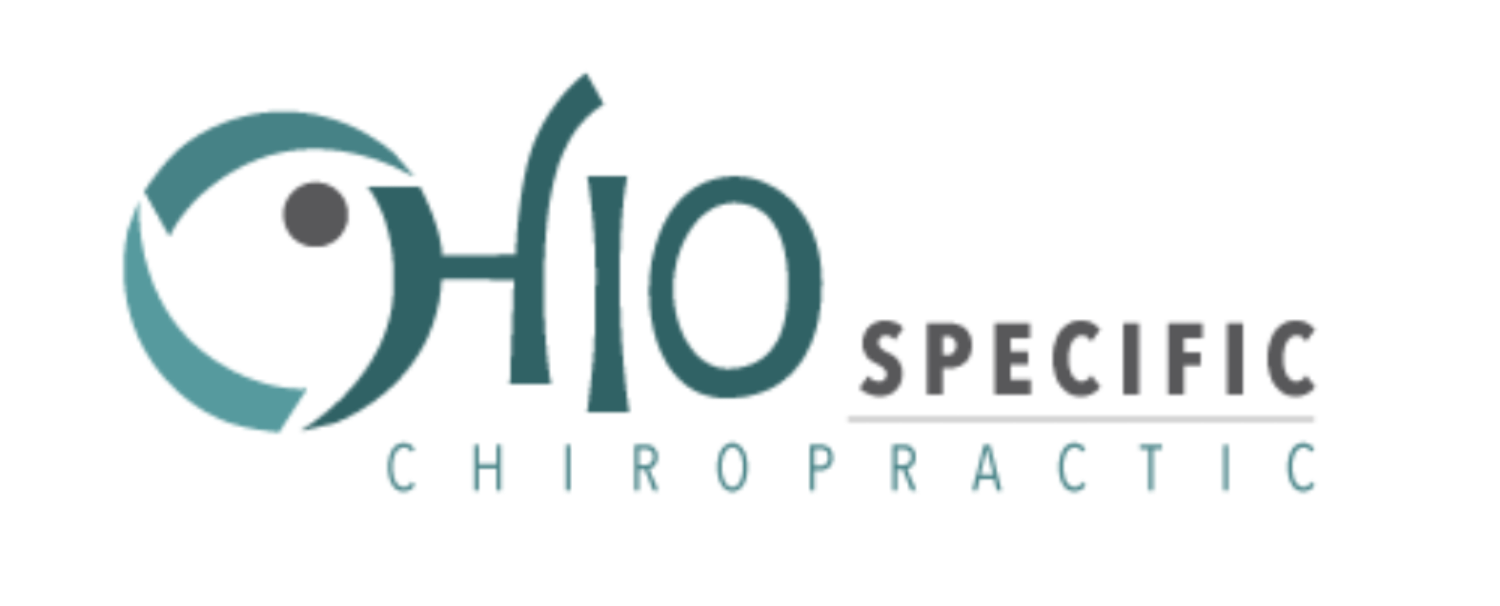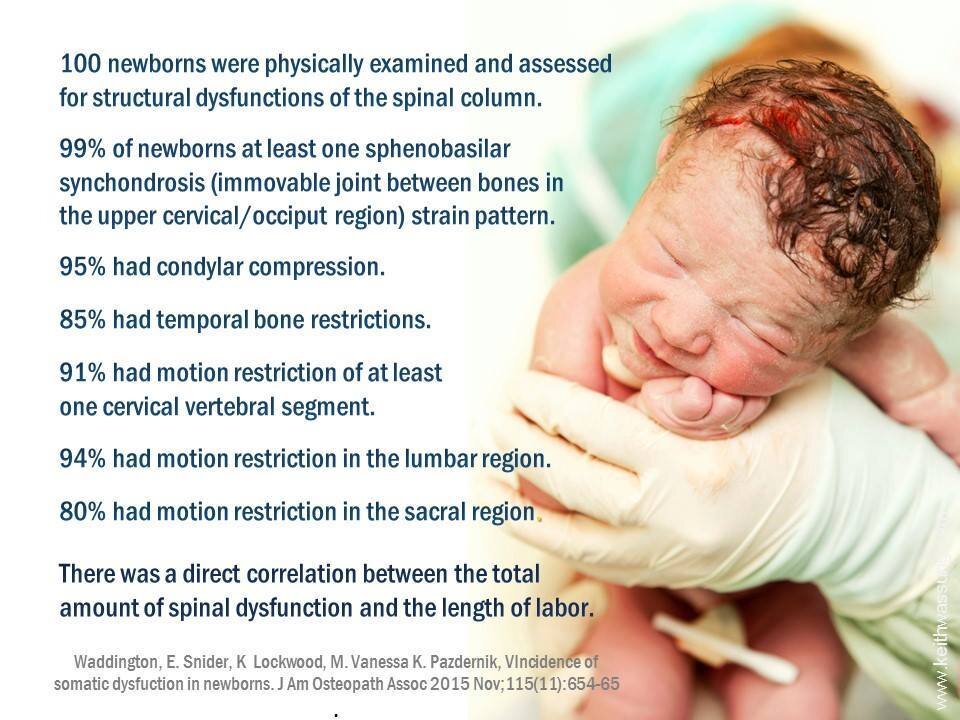Can Infants Get Vertebral Subluxations?
Can infants get vertebral subluxations?
Yes, infants can get vertebral subluxations. Not only can infants get subluxations, but they are more susceptible to getting them compared to adults. How can this be? To answer this question, we need to go over a little anatomy and physiology.
The Occiput bone is the lower part of the skull. The Occiput bone articulates, or joints, with the first cervical vertebra. The first cervical is also known as the Atlas bone.
The Atlas bone articulates with the second cervical vertebra, also known as the Axis bone. These three bones (the Occiput, Atlas and Axis) make up the Upper Cervical Spine.
The upper cervical spine houses and protects the brainstem. The brainstem is a unique part of the Nerve System because it contains nerve pathways that connect the brain above to the body below. Every organ, gland and tissue of your body communicates through the brainstem.
The region of the Occiput that joints with the Atlas is the Occipital Condyle. The Occipital Condyle is convex in shape. This means it curves outward.
The region of the Atlas that joints with the Occipital Condyle is the Superior Articulating Facet. The Articulating Facet is concave in shape. This means it curves inward.
If we put the condyle and the facet together, we create the Occipital-Atlantal Joint. This joint is considered a Condyloid joint. It is an oval or “egg” shaped in its design.
The relationship between the Atlas and Occiput is similar to how you would hold an egg in the palm of your hand. This shape allows for flexion and extension, lateral flexion and rotation.
Let’s compare the adult upper cervical spine to that of an infant’s upper cervical spine.
The infant’s spine has the same structures as the adult spine: the Occiput, Atlas and Axis. The biggest difference in the infant’s upper cervical spine compared to the adult is the shape.
The Occipital condyles have less of a convex shape. The Atlas articulating facets have less of a concave shape. This is in part due to the fact that the infant’s spine is less developed than the adults.
This then makes the Occipital-Atlantal Joint wider and less defined. It has less of an oval or “egg” shape. Because it is not as oval-shaped, there is an increase in space between the joints.
What does this all mean in regards to a vertebral subluxation?
The infant's spine is less developed. There is a decrease in articulation and surface locks between the joints. This puts more strain on the muscles and stress on the nerves to maintain adaptation.
Both adult and infant upper cervical spines rely on muscles and ligaments for movement and balance. The joints of the upper cervical spine don't have many bony locks. The lack of bony locks increases the range of motion of the upper cervical spine.
Let's compare the upper cervical spine to the elbow joint. The elbow has less range of motion because it has more bony locks compared to the upper cervical spine. The elbow joint has more stability than the upper cervical spine as well. This means it has less of a chance to get injured.
The upper cervical spine is more like the shoulder joint. The shoulder has a great range of motion but sacrifices stability for that motion. The shoulder also lacks bony locks. It has to rely on muscles and ligaments for stability. The shoulder has a greater chance of injury compared to the elbow for these reasons.
Muscle strain and nerve stress decrease the adaptation of the upper cervical spine and brainstem. This increases the potential for compensation. A specific type of compensation that occurs is a vertebral subluxation.
A vertebral subluxation is a physical presentation of a compensation. When nerves are stressed, it effects their sensation, perception, and behavior. The three main types of stress are physical, chemical and emotional in nature.
You might think that an infant lives a pretty stress-free life, but that’s not true.
The most common physical stress that effects an infant is the birthing process. The modern medical birthing process has only increased the potential for physical stress.
For example, the OBGYN can pull on an infant’s upper cervical spine with a force of 200 Newtons. That is equal to about 45 pounds of traction force. To compare that with a Chiropractic adjustment, the adjustment has only a force of around 20 Newtons, which is equivalent to 4.5 lbs.
A common chemical stress that infants encounter is the ever-increasing use of formulas. Baby formula lacks many natural nutrients for a baby, specifically, antibodies. Natural antibodies are only found in mother’s breast milk.
The delivery of these antibodies to the child is their first dose of protection. This helps kickstart their immune system. Without them, the infant has a lower resistance to infection. Formula also has many different synthetic and artificial components in them. These ingredients can alter the child’s chemical makeup.
And lastly, emotional stress. An example of this would be the “cry it out” method for dealing with a crying or fussy baby. The base for the "cry it out" method is on the idea of self-soothing. The method aims to teach the baby how to cope with stressful situations and to stop crying.
What actually happens to a baby when forced to “cry it out” is not healthy coping but Sympathetic overload and Nerve System exhaustion. The Sympathetic response normally should be short-lived. But if constantly taxed, it can deplete the Nerve System and cause a cascade of negative physiological problems.
As a Pediatric Chiropractor, my goal is to improve the integrity of the upper cervical spine to help promote better adaptation, health and well-being. I am more concerned about trying to build stronger children instead of just trying to fix broken adults.
The words Pediatric Chiropractic might sound foreign to you if you’ve never been to a Chiropractor or only think Chiropractic is for those who are 40 and older with neck and back pain. But a lot of the health problems that show up in our 40s and 50s didn’t happen overnight. Years of compensations caused them to finally bubble up to the surface.
Pediatric Chiropractic can provide specific positive influences that can amplify every growing child’s potential for health.
- Jarek Esarco, DC, CACCP
Related Blogs:
What is Pediatric Chiropractic?
What Do Pediatric Chiropractors Do?
Does Pediatric Chiropractic Work?
Top 3 Reasons Why Parents Take Their Children to a Family Wellness Chiropractor
Safety and Effectiveness of Pediatric Chiropractic
100+ Years of Pediatric Spinography
Doesn't an Adjustment Take a Great Deal of Strength?
















